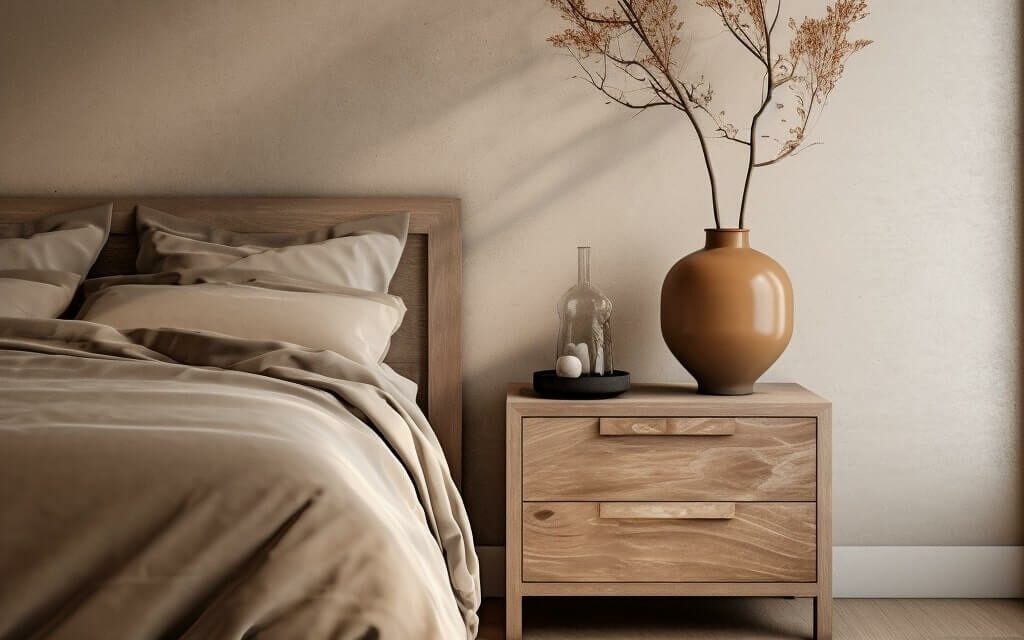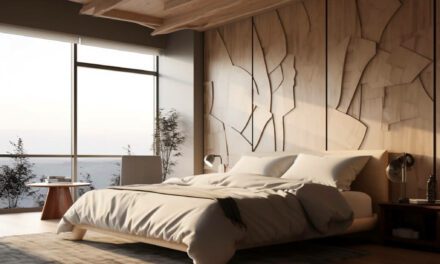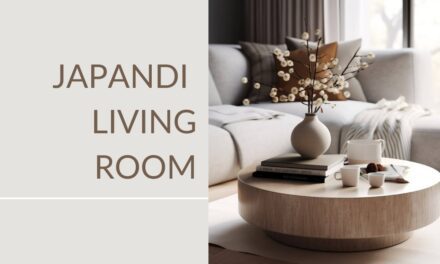As a fervent admirer of the elegant fusion that is Japandi, I’ve always marveled at the intricate craftsmanship that characterizes this remarkable style, particularly when it comes to Japandi nightstands.
The balance between the Japanese ethos of wabi-sabi and the Scandinavian penchant for functionality isn’t just about aesthetic compatibility; it is also a testament to the exceptional skills of the artisans involved.
Craftsmanship Behind Japandi Nightstands
Understanding the craftsmanship behind Japandi nightstands involves appreciating the two distinct cultures and their shared reverence for natural materials and handcrafted items.
The Japanese design tradition leans into the rustic, subtly imperfect beauty of handcrafted furniture.
On the other hand, Scandinavian craftsmanship places great emphasis on longevity, producing items designed to stand the test of time.
In crafting a Japandi nightstand, artisans marry these two philosophies seamlessly.
They incorporate Japanese techniques such as wood joinery without nails or screws and pay painstaking attention to detail, while also adhering to the Scandinavian tradition of simplicity and functionality.
The craftsmanship lies not only in the final product but also in the carefully chosen materials, the hand-finished details, and the balanced fusion of two minimalist design philosophies.
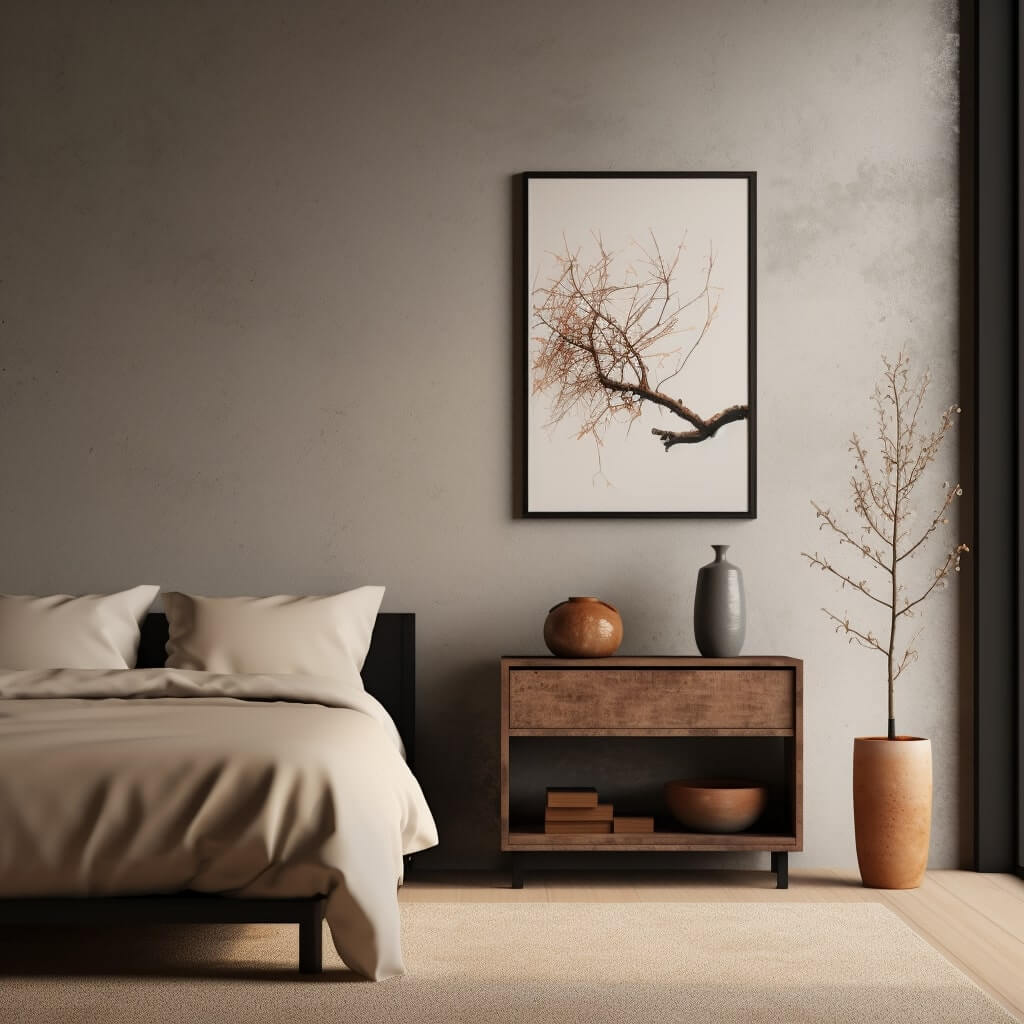
Key Features of Japandi Nightstands
The magic of Japandi nightstands lies in their key features, which are a harmonious blend of Japanese and Scandinavian design elements.
First and foremost, a Japandi nightstand carries an aura of minimalism.
It does away with unnecessary elements and focuses on functionality, while still maintaining an aesthetic appeal.
The use of natural materials, especially wood, is a hallmark of this style. From lighter woods like ash and beech, reminiscent of the Scandinavian influence, to darker hues like walnut that echo Japanese aesthetics, the material choice is a crucial element of Japandi design.
Clean, sleek lines and a soft, earthy color palette characterize these pieces.
The idea is to create a calming and peaceful atmosphere, in line with the zen philosophy.
Finally, the concept of wabi-sabi, finding beauty in imperfections, manifests in subtly asymmetrical designs or small, intentional flaws.
These features come together to create a nightstand that is more than just a piece of furniture – it’s a representation of a lifestyle centered around mindfulness, simplicity, and a deep respect for nature.
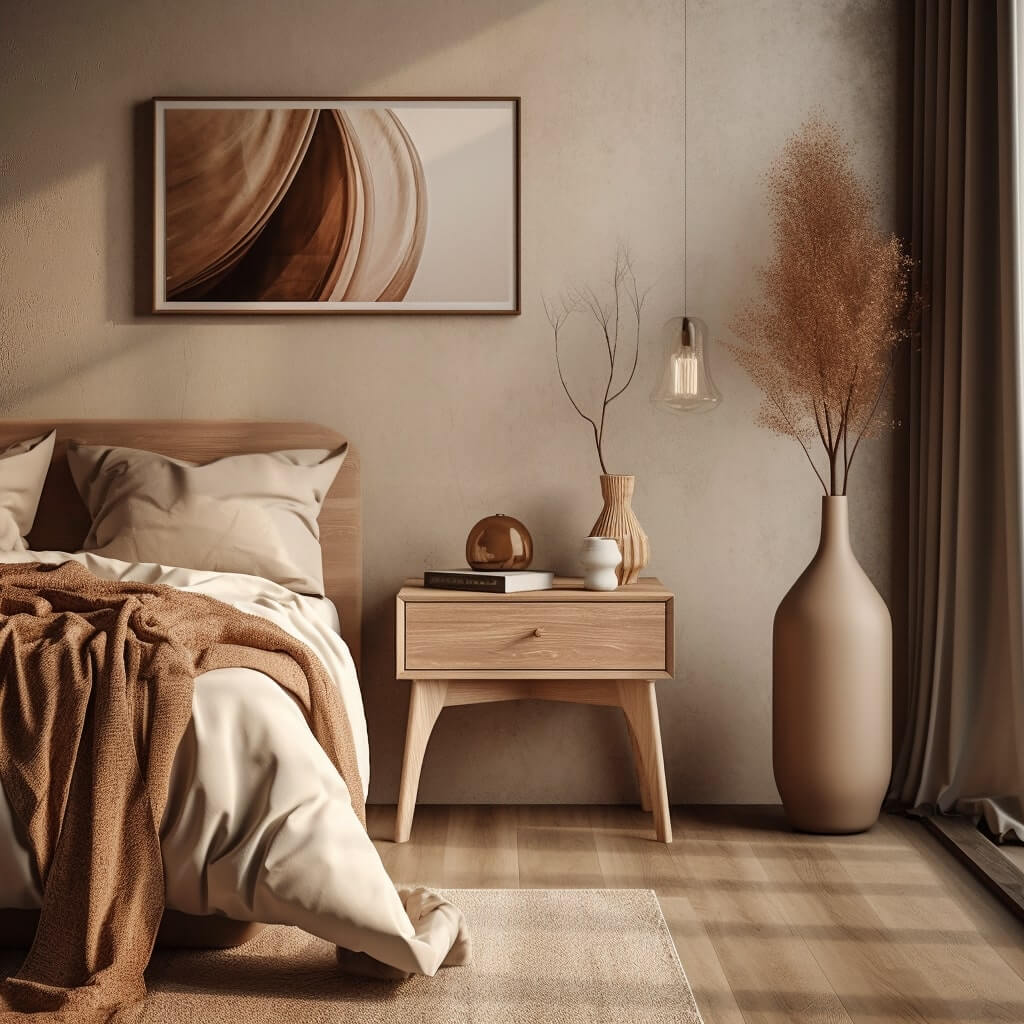
The Philosophy of Japandi Craftsmanship
The philosophy of Japandi craftsmanship is a reflection of the values that both Japanese and Scandinavian cultures hold dear.
At its core, it represents a deep appreciation for the beauty inherent in simplicity. It is a celebration of clean lines, organic materials, and functional designs.
The Japanese concept of ‘iki’, a notion of elegance and sophistication through simplicity, is a driving principle in Japandi craftsmanship.
Similarly, the Scandinavian ‘lagom’, or the idea of ‘just the right amount’, speaks to the balance and restraint practiced in this style.
Craftsmen working in the Japandi style view their work as a form of art – every cut, every join, every choice of wood grain or color, is deliberate and purposeful.
Sustainability is a key consideration, with a strong preference for locally sourced, eco-friendly materials.
The goal is to create pieces that are not just functional or attractive, but that also promote peace, tranquillity, and respect for the natural world.
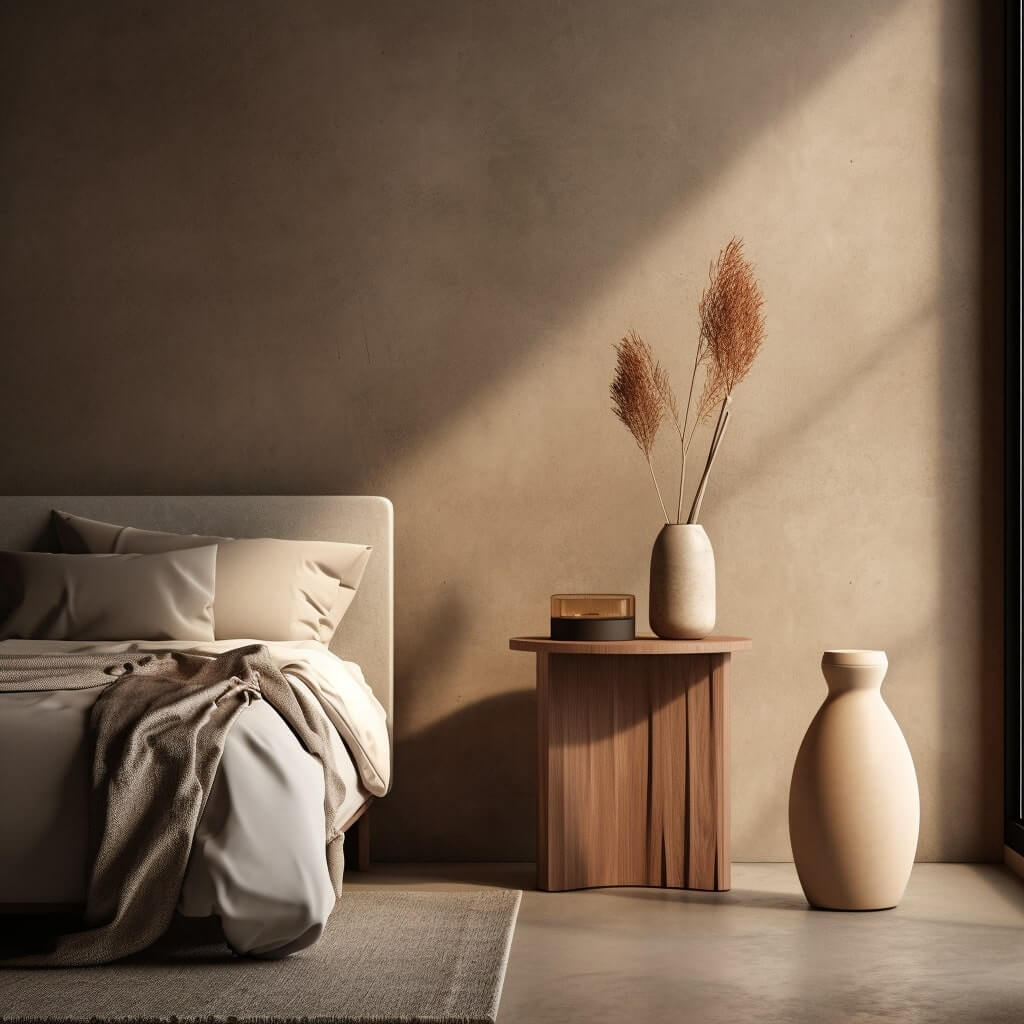
Materials and Colors in Japandi Nightstands
The magic of Japandi style emerges not just from its clean lines and simple functionality, but also from its exceptional use of materials and colors.
From the choice of wood to the application of a subdued color palette, every detail contributes to the harmonious blend of Japanese and Scandinavian design philosophies.
Popular Materials Used in Japandi Nightstands
Japandi nightstands are synonymous with natural materials. While there is a wide range of materials one could potentially use, the most prevalent is wood.
Light, smooth, and aesthetically pleasing, woods like ash, oak, and pine are common picks derived from Scandinavian design.
They convey a sense of warmth and brightness, perfectly embodying the Nordic concept of ‘hygge’, or coziness.
In contrast, the Japanese influence brings in darker, more robust woods like walnut and mahogany.
These are often left with their natural, grainy texture, embracing the wabi-sabi philosophy of beauty in imperfection.
Additionally, materials like bamboo and rattan might be incorporated for their lightweight yet sturdy properties.
Exploring the Japandi Color Palette
The Japandi color palette is as calming and minimal as the style itself. It leans heavily into earth tones and muted, neutral colors.
White, beige, and shades of gray are common, often used as base colors to keep the room feeling airy and light.
These are accented with deeper, muted tones such as dark blues, forest greens, and charcoal grays – a nod to the Japanese influence.
Subtle pops of color might be introduced through accessories or soft furnishings, often with cooler tones like soft greens or blues, adding interest without overwhelming the senses.
The objective is to evoke a feeling of calm and serenity, reflecting the zen aspect of the style.
Natural Elements in Japandi
Natural elements play a central role in Japandi style.
Beyond just aesthetic appeal, the use of natural materials and colors in Japandi nightstands has a deeper significance.
It reflects a profound respect and appreciation for nature inherent in both Japanese and Scandinavian cultures.
The natural elements tie into the concept of wabi-sabi, which embraces the beauty of organic imperfections and transience.
On the Scandinavian side, the use of natural materials like wood and the preference for earthy colors reflect a love for nature and the desire to bring the outdoors in, adding a sense of coziness and warmth to the space.
In essence, the materials and colors in Japandi nightstands are not just design choices; they’re representative of a greater philosophy that values nature, simplicity, and tranquility.
Every material, every shade is a deliberate choice, aimed at creating a harmonious, relaxing environment that allows one to connect with the natural world, even within the comfort of their home.
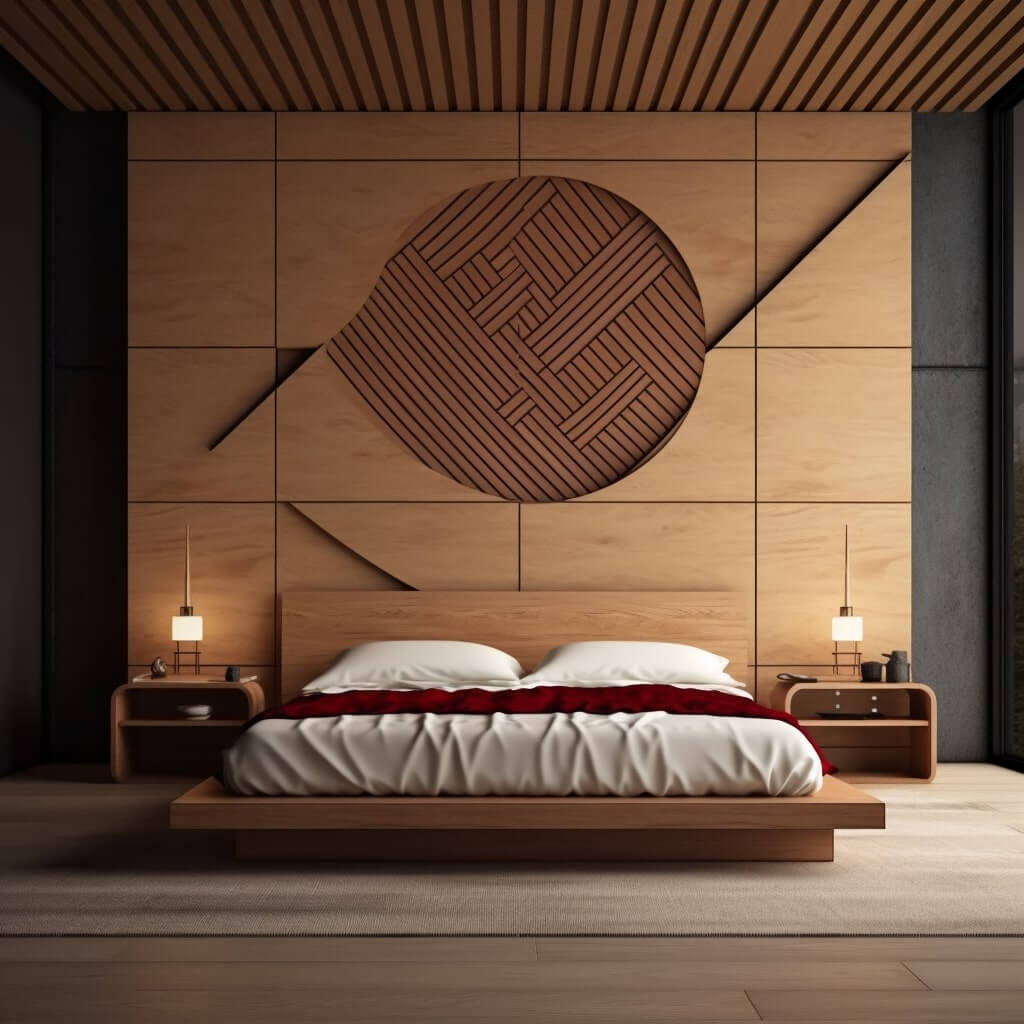
How to Choose the Perfect Japandi Nightstand
Embarking on a journey to select the perfect Japandi nightstand, I’ve realized that the process is a conscious design choice bespoke to you and your style.
Size and Dimension
The first consideration was always going to be the size and dimensions of the nightstand in relation to my space.
I needed to find balance in proportion between the nightstand, my bed, and the room.
My advice? Aim for the top of your nightstand to be approximately level with your mattress.
This isn’t a hard and fast rule – a few inches deviation can be accommodated based on your aesthetic preference and practical needs.
Also, pay heed to the width.
The nightstand should fit comfortably within your bedroom layout without obstructing the easy movement around the bed.
And the depth, too, matters. I learned that it’s crucial to have a nightstand deep enough to safely store and display my essentials without the risk of items toppling off the edge. In Japandi style, function is as important as form.
So it’s best to choose a piece that suits your space and serves your needs well.
Material and Color
When I considered the material and color of the nightstand, I realized the spectrum of options that Japandi offers.
While wood is the quintessential choice, the kind of wood and its hue should harmonize with your existing décor.
I found that light woods like ash or oak radiate a bright, Scandi vibe, while darker ones like walnut reflect a Japanese aesthetic.
The trick is to blend the two, finding a piece that merges into your bedroom’s color story seamlessly.
Storage Considerations in Japandi Nightstands
Storage considerations were another crucial aspect. The Japandi style is all about decluttering and organization, and so your nightstand should reflect this.
I sought out designs that offered drawers or shelves to store my bedside essentials neatly.
However, I ensured it didn’t feel bulky or heavy, maintaining the minimalist aesthetic. The idea is to choose a nightstand that not only looks good but also keeps your space tidy.
Sustainability in Japandi Choices
Finally, sustainability – a cornerstone of the Japandi philosophy – significantly influenced my choice.
When choosing my nightstand, I consciously opted for pieces crafted from sustainably sourced wood or recycled materials.
It felt important to know that my choice was contributing positively to the environment.
And there is an inherent joy in owning a piece of furniture that not only beautifies your space but also respects the natural world.
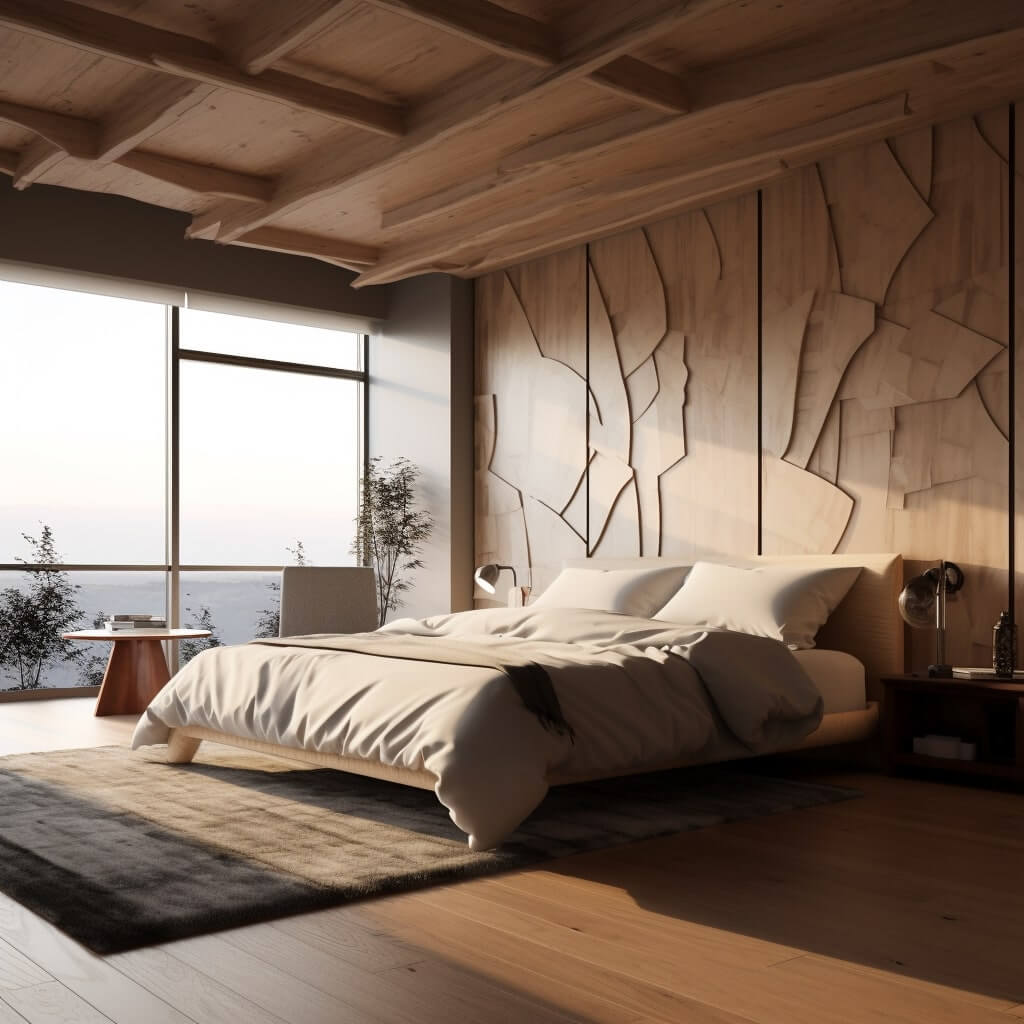
Styles of Japandi Nightstands
The beauty of this aesthetic lies in its flexibility and the balance between classic and contemporary designs.
Allow me to share my experiences and observations as I navigated through the various styles.
Classic Japandi Nightstand Designs
I discovered that the classic Japandi nightstand designs are steeped in understated elegance.
Typically, classic Japandi nightstands feature the subtle integration of Japanese and Scandinavian design elements, combining the rustic charm of natural, darker woods, inspired by Japanese interiors, with the functional simplicity of Nordic design.
Personally, I found these designs appealing because they provide a sense of tranquility and harmony that I believe is at the heart of the Japandi aesthetic.
Modern Japandi Nightstand Innovations
On the other end of the spectrum, I found myself equally intrigued by modern Japandi nightstand designs.
These pieces took the foundational principles of Japandi and infused them with contemporary innovations.
I saw designs that integrated metal elements, different types of woods, or even incorporated geometric shapes for a modern twist.
Innovative designs like hidden drawers, multi-level surfaces, or modular components were all a part of this modern interpretation.
Despite their contemporary touch, these pieces never lost sight of the principles of functionality and minimalism, beautifully carrying the Japandi ethos forward.
Customizing Your Japandi Nightstand
But the journey of choosing a Japandi nightstand didn’t stop at simply selecting a classic or modern design.
The concept of customizing my Japandi nightstand truly captured my imagination. Some artisans offered the option to personalize your nightstand – a choice in wood type or finish, the number of drawers or shelves, and even the dimensions of the piece.
I learned that customizing a Japandi nightstand is about creating a piece that not only fits your aesthetic preferences but also serves your unique needs. It’s about shaping a nightstand that reflects your personal interpretation of Japandi style and fits perfectly within your space.
Where to Buy Japandi Nightstands
When I decided to buy a Japandi nightstand, I initially found the plethora of options daunting. However, after some diligent research and personal experiences, I found some excellent places to purchase these beautiful pieces of furniture.
Top Retailers for Japandi Furniture
Several well-known furniture retailers have embraced the Japandi trend. Brands such as IKEA, with their Swedish roots, naturally fit into the Scandinavian side of Japandi furniture.
They have introduced a variety of pieces that embody the minimalist design and functional ethos of Japandi style.
Similarly, I also found West Elm to have a range of furniture that effortlessly combines the natural elements and clean lines associated with Japandi.
Online Platforms for Japandi Nightstands
As an ardent online shopper, I also discovered a number of online platforms offering a broad selection of Japandi nightstands.
Websites like Etsy and Overstock have a multitude of options from various sellers across the world, making it a hub for both traditional and modern Japandi designs.
I was also pleasantly surprised by the variety and quality available on Amazon and Wayfair.
Local Japandi Craftsmen and Artisans
But my most rewarding experiences came from sourcing pieces from local Japandi craftsmen and artisans.
This approach not only supported local businesses but also offered unique, handcrafted pieces that added an extra personal touch to my space.
Many cities have local markets or furniture workshops where you can find artisans specializing in Japandi style.
FAQs
What is a Japandi interior design?
Japandi interior design is a blend of Japanese and Scandinavian styles, combining the minimalism and functionality of Scandinavian design with the elegance, craftsmanship, and love for natural materials found in Japanese aesthetics.
What is the meaning of Japandi?
Japandi is a design term that combines “Japanese” and “Scandi,” signifying a style that melds Scandinavian functional simplicity with the wabi-sabi elegance of Japanese design. It emphasizes minimalism, simplicity, natural elements, and a muted color palette.
What is the difference between Scandi and Japandi?
While Scandi design emphasizes functionality and bright, clean aesthetics using lighter woods, Japandi incorporates these elements but also integrates the rustic and organic elements of Japanese design, using both light and dark woods and an emphasis on artisanal craftsmanship.
What are the characteristics of Japandi design?
Japandi design is characterized by minimalism, simplicity, functionality, and a balanced use of natural materials. It showcases a muted color palette, combining lighter tones from Scandinavian design with the darker, earthy colors found in Japanese aesthetics. It also embraces artisanal craftsmanship and the wabi-sabi philosophy.
What is the difference between Zen and Japandi?
Zen design focuses primarily on creating a meditative and serene space through simplicity and balance. While Japandi shares these principles, it also emphasizes a fusion of Japanese aesthetic elements with Scandinavian functional design. Japandi uses a mix of both lighter and darker tones, compared to the generally lighter Zen aesthetic.







